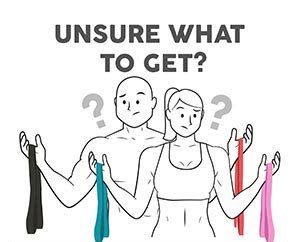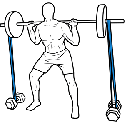
“Pole dancing? You mean, like stripping?”
Let me start off by saying that you wouldn’t be the first person to ask that question. The phrase “pole dancing” strikes an immediate mental image of dimly-lit nightclubs filled with scantily clad women dancing for tips for the majority of the population. Images from TV shows, movies, even personal experience have reduced the image of a vertical piece of metal to have only one purpose - for women to dance sexy and make money off of it. However, I’m about to welcome you into the city of Atlantis you didn’t know existed in your own backyard.
Pole dancing for fitness is one of the newest and fastest growing industries not only in your town but across the globe. Pole dancing for exercise began around 20 years ago, however, this statement alone is debatable amongst the pole connoisseurs amongst us.
History of Pole Fitness
Some argue that pole fitness as we now know it derived from Chinese pole which is often found as a staple in the circus world. It’s difficult to deny that Indian pole gymnastics called “Mallakhamba,” didn’t have any influence either. And of course as many in the pole dance fitness community would argue, pole fitness as we know it came from strip clubs. The truth is that all of these, particularly Chinese pole and dancing-club poles, together is what pole dancing for fitness is born from. On one hand, pole fitness is called pole “dance” fitness because the competitions, classes, and the general theme revolves around creating a choreography and dancing. However, a large majority of pole dance fitness tricks, both beginner, and expert level, have come from Chinese pole tricks, especially in the more recent years as the level of the community has advanced.
Pole dancing for exercise has become more and more popular over the last two decades as people are starting to see that there is more than one possibility for this vertical apparatus. Pole fitness is even accepted by the Olympics as an international sport! Studios are opening up left and right, with over 80 studios in California and Florida alone. If you were to ask anyone in the pole community why they take classes you would hear phrases like: “it’s an extremely challenging workout”, “it’s like nothing else”, “it makes you feel excited to get new tricks”, “my body became really toned from pole dancing,” “the pole community is supportive”, “you never stop learning and improving,” and “it’s an amazing core work out.” The list goes on, but you are starting to get the idea, right? Even better yet, as the pole community has grown pole fitness accessories have started to pop up all over, improving the safety, assistance, and challenge that this workout has to offer.
Dance Stretch Bands and Pole Fitness

Rubberbanditz creator, Ari Zandman-Zeman, discovered pole dancing for fitness one day when he was on the sunny sandy Venice Beach in California doing what he loves: calisthenics street workout training on Muscle Beach. Ari saw a pole dancer named Elizabeth Blanchard with amazing strength, skill, and physique and inquired about her training. He was as shocked as you might be about the fact she was a pole dancer, aerial artist, and contortionist. Upon building a business-oriented around helping people train safely and smart for calisthenics bodyweight training he began to realized there were several parallels between calisthenics and pole fitness.
Upon further exploration, they found there were several logical ways to incorporate dance stretch bands to stimulate and enhance the quality of training for pole dancers of varying abilities. Their juxtaposition was striking between calisthenics street workout training, which traditionally uses a horizontal metal pull-up bar and pole dance training, which uses a vertical metal bar. Many of movement patterns are amazingly close and required similar amounts of core stability, muscular endurance, and flexibility. As it turns out, calisthenics bands and pole dance bands are birds of the exact same feather and are used nearly identically as an assisted body weight training enhancer. Upon making the discovery, us pole dancers couldn’t be happier or more ecstatic to have such a dynamic new training tool in our arsenal!
Pole dancing may seem intimidating to start, but no matter what studio you enter you will find there are beginner pole dancing classes to teach you the basics of the sport. Not only will you start a new and fun way to workout, you will become part of a supportive community as well! We pole dancers are known for cheering and clapping each other on throughout the process of learning. However, learning pole fitness takes time, but that’s part of the excitement and lure of the sport. When you begin you may not even be able to do a single pull up (like most of us, myself included) but you will find that given a few pole fitness classes your strength builds on itself at a shocking rate. Even better yet, now that we have dance stretch bands you will learn quicker and perform several fundamental movements even faster than previously possible.
Pole Dancing for Fitness Tips and Tricks

There are tricks you will learn to help your strength training and condition your body to progress, in addition to stretching for safety and building the requisite strength to accomplish more advanced tricks. Some of the first tricks you will learn are called “inversion,” “shoulder mount,” and “butterfly.” A pole dance inversion is one of the first barriers that when a new pole dancer starts it’s like a right of passage. A pole inversion is when you stand next to the pole, grab it with both hands, pull down on it and pull yourself upside down. Fortunately for you, one of the benefits of starting pole dancing now is that we have pole dance accessories. Before they existed in our pole world it took a lot more effort and time to get to your goals. Now you can invert a lot more efficiently and gain core strength even faster because of them.
“How can an exercise resistance band make you stronger on the pole?” you might ask. Let me explain:
Imagine a rubber band in your mind. If you put the band over one finger and suspended it in the air and then with another finger pressed down on it, it supports the weight and stretches it, right? Whenever you lift your bottom finger, the band follows and helps lift that finger back up towards the top finger, only catapulted with greater force from elasticity since it was stretched. Pole fitness bands act in a similar manner, they help keep you suspended in the air by offsetting a portion of your body weight, thus making the exercise more accessible and able to perform for a more prolonged period of time. This extra boost helps engage your muscles further and build strength faster because you are able to perform exercises immediately, hold them for longer, and train safer with the help of your trusty pole bands.
How to Use Bands For Pole Inversions

Instead of standing next to a pole and trying your hardest using just your own upper body strength to pull down with your arms and tuck your knees to your chest, the band helps you by allowing you to condition before you have all the necessary strength to pull yourself upside down. One of the greatest misconceptions in the pole world is that you have to be athletic, able to do a pull-up, flexible, already fit, or a dancer to start. Each and every one of these is a total myth. When I started pole I couldn’t touch my toes, I could never do a pull-up, and I hadn’t done anything athletic in over 7 years. Now I am a world competitor and have the flexibility to do the splits (side and middle). The real truth is that it takes time and conditioning. Dance stretch bands are part of that equation. If you cannot do a pull-up, you tie the band to the pole above your head, step inside of the pole band, and start doing pull-ups and allow the assistance of the band to help bounce you up, and assist your natural strength. As you get stronger you’ll use lighter resistance bands until you no longer need a band.
You may not be able to grab a pole and go upside down today, but you can work on the action of the inversion until you slowly build the muscle and every day and become stronger and closer to your goal of inverting. Building muscle is a process that is well attainable, but takes focus. Muscles are built through repetition and pushing yourself past your current comfort level, a concept known as ‘progressive overload’. The process entails increasing blood flow into your muscles through exercise, which then breaks apart your muscle fibers so they can fuse together rebuild and strengthen while you rest.
To do an inversion with the resistance band, one would:
- Tie the band around the pole by looping the band, around the pole, and then opening one end of the band to create a loop.
- Once you have opened one end of the band around the pole in a loop, you would put the second closed end of the band through the loop around the pole and then pull that closed-end until the loop reaches the pole and you have a knot to keep the band on the pole.The closed end that went through the loop is then one long piece, and from there you can open that end and create another loop to put your leg through.
- Once you put one leg through the loop you want to pull that loop up to your hip so you get the heaviest part of your body supported by the band. Once your leg is inside of the loop, you want to stand next to the pole, wrap one arm around the pole and grab on, and the second hand will simply reach across your body to grab the pole above the first hand.
- With the band helping prop you up, you can exhale, pull down with your arms, and pull your knees up to your chest. During this motion, look back and imagine going upside down.
With repetition you will eventually be able to pull down, tuck your knees in, and look back until your hips are practically touching the pole, your arms will extend, and you are fully upside down in an inversion. Congrats! You have accomplished one of the first steps to becoming an even better, stronger, and more proficient pole dancer.
Don’t hesitate to start pole today. You are opening up the door to a new, exciting, fun, and challenging way to get a full-body workout, meet new people, and find joy and accomplishment in your life.
The two most important things when beginning are to have fun and not get discouraged. Fitness should be something you enjoy and not dread, so focus on the brighter aspect that makes you feel happy, strong, and liberated. Don’t get bogged down if everything feels like a struggle at first. Good things take time and it’s totally normal to feel overwhelmed and underprepared. With confidence and consistency, you will emerge victoriously.
About the Author
Lindsay Lithe is a professional pole dance instructor, international competitor, and competition judge.



